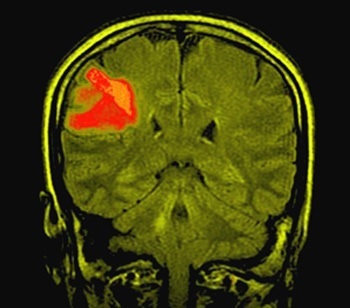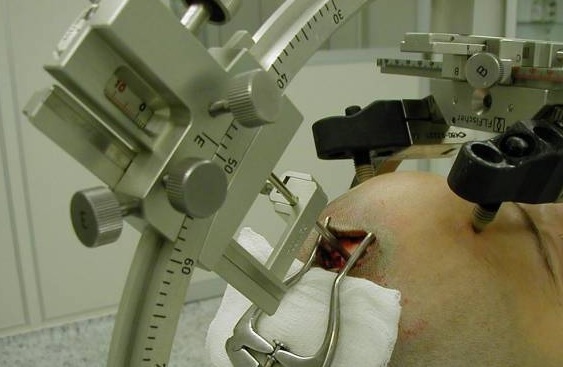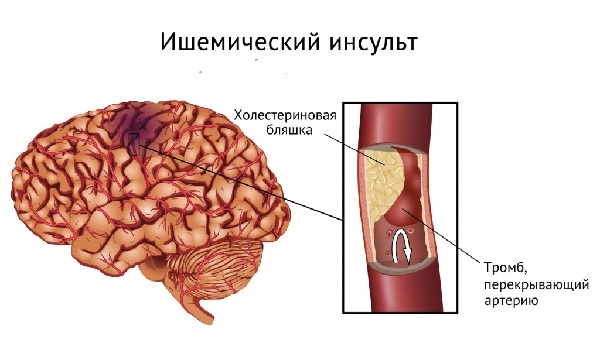Prognosis for life with astrocytomas of the brain
Contents:
- Classification of the disease
- Main symptoms
- Diagnosis and treatment
- Forecast for
 patients Astrocytoma of the brain is the most common tumor from glial cells of the nervous tissue. Glial cells are an important component of the central nervous system, perform many functions. To establish the exact cause of the onset of tumor growth, as a rule, fails. However, there are a number of factors contributing to this process:
patients Astrocytoma of the brain is the most common tumor from glial cells of the nervous tissue. Glial cells are an important component of the central nervous system, perform many functions. To establish the exact cause of the onset of tumor growth, as a rule, fails. However, there are a number of factors contributing to this process:
- genetic predisposition to tumor diseases;
- severe environmental conditions in the place of residence;
- risk factors associated with human performance;
- a number of viral infections associated with an increased risk of cancer.
Classification of the disease
The main classification used in clinical practice to evaluate the astrocytoma prognosis of the brain is based on the degree of their malignancy:
- The pilocidal astrocytoma of the brain is the most benign. It is characterized by clear boundaries, low intensity of growth, a good response to ongoing treatment. After the removal of this tumor, the risk of recurrence is close to zero.
- Fibrillar astrocytoma of the brain is characterized by very slow growth, however, it is very difficult to identify the boundaries of its growth. Most often observed in young people between the ages of 20 to 30 years. After surgical removal of the tumor, the recurrence of the disease is possible.
- Anaplastic astrocytoma of the brain is associated with rapid growth of the tumor, a severe adverse course of the disease.
Important! The most dangerous tumor is glioblastoma. Very quickly sprouting into surrounding tissues, it is poorly treated by any methods.
In addition to the astrocyte species specified here, a protoplasmic astrocytoma of the brain is distinguished, characterized by slow growth and a good response to ongoing treatment.
The main symptoms of
All the symptoms, with the development of tumors in the brain are divided into two large groups: general and local. Common symptoms associated with increased intracranial pressure:
- permanent headache;
- convulsive syndrome;
- nausea, vomiting in the morning;
- general cognitive impairment( decreased memory, attention, intellectual functions).
Local symptoms are associated with direct exposure of the tumor to the brain tissue. Their manifestations depend on the localization of the astrocytoma:
- speech disorders, its perception;
- problems with sensitivity and movements in the limbs;
- vision impairment, smell;
- mood disturbance.
Diagnosis and treatment
 The diagnostic process is based on methods of neuroimaging: overview radiography, computer and magnetic resonance imaging, as well as modern positron emission tomography. These methods allow you to see the localization of the tumor and its size, and on this basis make a treatment plan.
The diagnostic process is based on methods of neuroimaging: overview radiography, computer and magnetic resonance imaging, as well as modern positron emission tomography. These methods allow you to see the localization of the tumor and its size, and on this basis make a treatment plan.
The following medical treatments are used: operative tumor removal, radiosurgery with gamma knife and other methods, as well as radiation and chemotherapy. Treatment with astrocytomas of the brain is a long and complex process.
Prognosis for patients
The main long-term effects of astrocytomas of the brain are related to the following features:
- the possibility of the transition of the disease from one stage to another with the subsequent increase in the degree of malignancy;
- very high risk of recurrence after tumor removal;
- high degree of malignancy of the process.
The prognosis for these tumors, especially with pilocity or piloidal astrocytoma of the brain, is favorable, which is associated with the ease of its removal, as well as a low probability of developing repeated episodes of tumor growth.
When the patient develops a diffuse, or fibrillary astrocytoma of the brain, the prognosis remains favorable, however, in the operative treatment there is a chance to leave the tumor cells, which can lead to relapse of the disease.
In general, the duration and quality of life of a patient depends mainly on the form and extent of the disease. But it is worth remembering that even the first degrees of tumor growth, manifested by the development of pilocity astrocytoma, very often lead to a rapid progression of the tumor and the development of severe consequences for the organism, up to lethal cases.
The prognosis for astrocytomas of the brain for the duration of the patient's life is relatively favorable: at the first stage of the disease, life expectancy is 10-15 years;At the second stage - 6-7 years, and at the third 2-4 years.
write the question in the form below:



